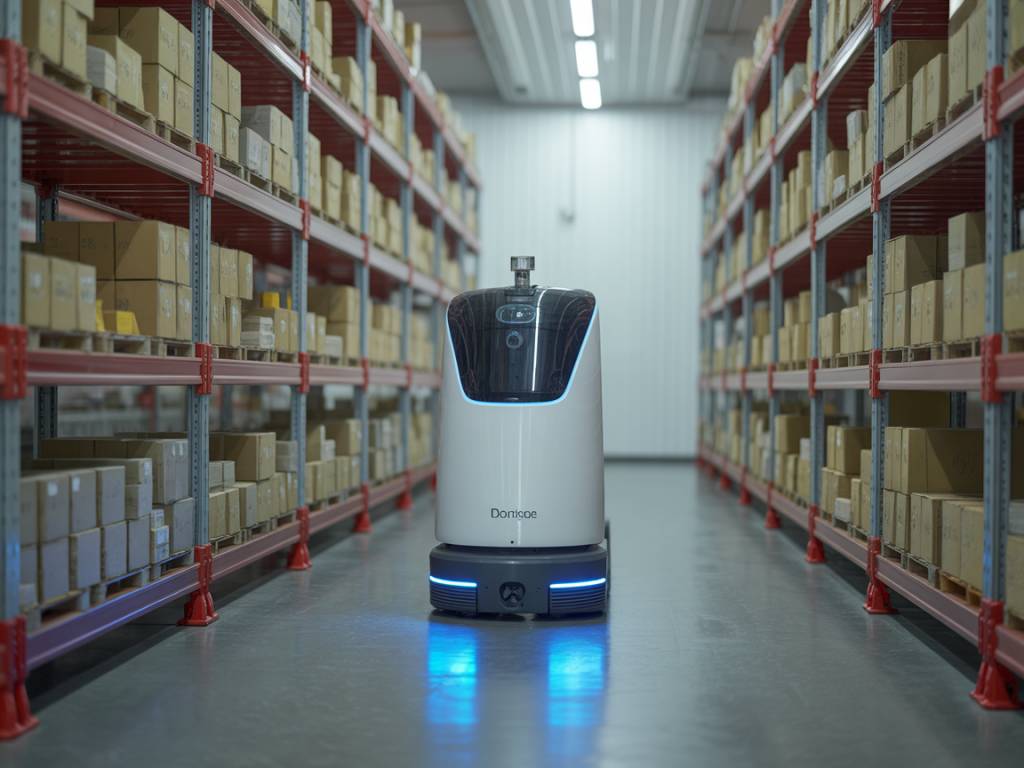Revolutionizing Cold Chain Logistics with Autonomous Mobile Robots
In the evolving world of supply chain and logistics, the cold chain segment presents some of the most demanding challenges. Maintaining strict temperature requirements throughout transport and storage, minimizing human error, and ensuring traceability are all crucial. As demand for perishable goods like pharmaceuticals, fresh produce, and frozen foods increases, companies are turning to innovative technologies to improve efficiency. Among the most promising solutions: Autonomous Mobile Robots (AMRs).
Using AMRs in cold chain logistics can significantly enhance operational efficiency, reduce waste, and ensure product integrity. This article explores how autonomous robots are being used to optimize cold storage, meet regulatory compliance, and streamline warehouse workflows.
Understanding Cold Chain Logistics
Cold chain logistics refers to the management of temperature-sensitive products as they move through supply chains. From manufacturers to end users, these products require controlled environments to maintain their efficacy and safety. Common temperature ranges include:
- Refrigerated: 2°C to 8°C
- Frozen: -18°C or below
- Cryogenic: -150°C and below
Managing logistics in these conditions is complex. Traditional supply chains rely heavily on manual labor for storage, picking, packing, and transportation – a model increasingly challenged by rising labor costs, workforce availability, and strict regulatory requirements. The integration of autonomous solutions is becoming not just valuable, but vital.
Why Autonomous Mobile Robots Are Ideal for Cold Chain Operations
Autonomous Mobile Robots are self-driving machines capable of navigating dynamic and complex environments without direct human intervention. In a cold chain environment, where consistency and accuracy are non-negotiable, AMRs offer multiple benefits:
- Improved temperature consistency: Faster and more efficient handling minimizes temperature fluctuations by reducing exposure time.
- Reduced human error: AMRs follow pre-programmed routes and workflows, eliminating mistakes common in manual processes.
- Labor savings: AMRs reduce dependency on human labor in extreme conditions, minimizing fatigue-related issues.
- Increased throughput: Robots can operate 24/7, providing consistent productivity without breaks.
- Enhanced traceability: Many AMRs are equipped with sensors and software that collect data in real time, supporting compliance and audit trails.
How AMRs Work in a Cold Chain Environment
Deploying AMRs in cold chain facilities requires adapting to unique challenges. Cold temperatures can impact battery performance, sensors, and electronics. Leading AMR manufacturers have addressed these issues with specialized solutions that allow robots to operate efficiently in sub-zero conditions. Key adaptations include:
- Thermally insulated components to protect sensitive electronics
- Battery systems designed for low-temperature performance
- Specialized lubricants and materials that resist freezing
- Low-latency sensors for precise navigation in high-density environments
In practice, AMRs operate in refrigerated warehouses and distribution centers by navigating between storage racks, loading docks, and packaging areas. Some AMRs handle pallet transport, while others focus on item picking or sorting. Integration with Warehouse Management Systems (WMS) allows real-time route optimization and task assignment based on demand and priority.
Warehouse Applications of AMRs in Cold Storage
The adoption of AMRs in cold storage facilities is streamlining many warehouse processes:
- Storage and Replenishment: Robots transport goods from receiving docks to designated cold zones, improving space utilization and preventing dwell time issues.
- Order Picking: AMRs can either assist human pickers by transporting picked goods or operate as fully autonomous picking systems using vision and AI.
- Packing and Staging: Once orders are picked, AMRs move them to packing areas, maintaining cold chain integrity throughout the process.
- Returns and Recalls: In the event of a recall, robots can quickly retrieve affected inventory without disrupting operations.
AMRs also support Just-In-Time (JIT) inventory strategies by enabling highly responsive movements, reducing the need for buffer stock, and ultimately decreasing storage costs in temperature-controlled environments.
Addressing Challenges and Considerations
While the benefits of using AMRs in cold chain logistics are substantial, successful implementations require careful planning. Operators must evaluate:
- Temperature tolerance: Not all AMRs are rated for extreme cold. It’s essential to select models specifically designed for refrigerated environments.
- Infrastructure compatibility: Cold chain facilities may require structural modifications to accommodate AMRs, such as the installation of reflective markers for navigation or dedicated charging stations.
- Training and change management: Staff must be trained to interact with AMRs and adapt to new workflows.
- Cybersecurity and data integration: As AMRs collect and transmit sensitive data, secure networks and effective integration with existing systems are paramount.
Key Industry Use Cases
Across the globe, industry leaders are already leveraging AMRs to transform their cold chain logistics:
- Pharmaceutical distribution centers use AMRs to ensure the safe movement of vaccines and biologics, which require tightly regulated environments.
- Frozen food retailers deploy AMRs to improve pick-rate precision in dense freezer environments where human labor is limited.
- Grocery fulfillment centers integrate robotics to meet surging e-commerce demand while maintaining freshness and cold chain compliance.
The result is a growing ecosystem of automated cold chain operations, marked by reliability, scalability, and performance.
The Future of Robotics in Cold Chain Logistics
As artificial intelligence, machine learning, and IoT continue evolving, AMRs will become even more capable. Predictive analytics will enable preemptive maintenance of robotic fleets, reducing downtime. Fleet collaboration will enhance efficiency, allowing multiple robots to work in concert across large facilities. Machine vision will improve accuracy in item identification, increasing order fulfillment accuracy.
The convergence of smart robotics and cold chain supply chains is more than an efficiency play—it’s becoming a competitive necessity. Businesses that invest early in automation are positioning themselves to meet growing demand, tighter regulations, and evolving consumer expectations.
For companies involved in pharmaceutical distribution, frozen food supply, and temperature-sensitive e-commerce logistics, the integration of Autonomous Mobile Robots represents not just innovation—but a substantial step toward building more resilient, agile, and cost-effective operations in a highly competitive landscape.

